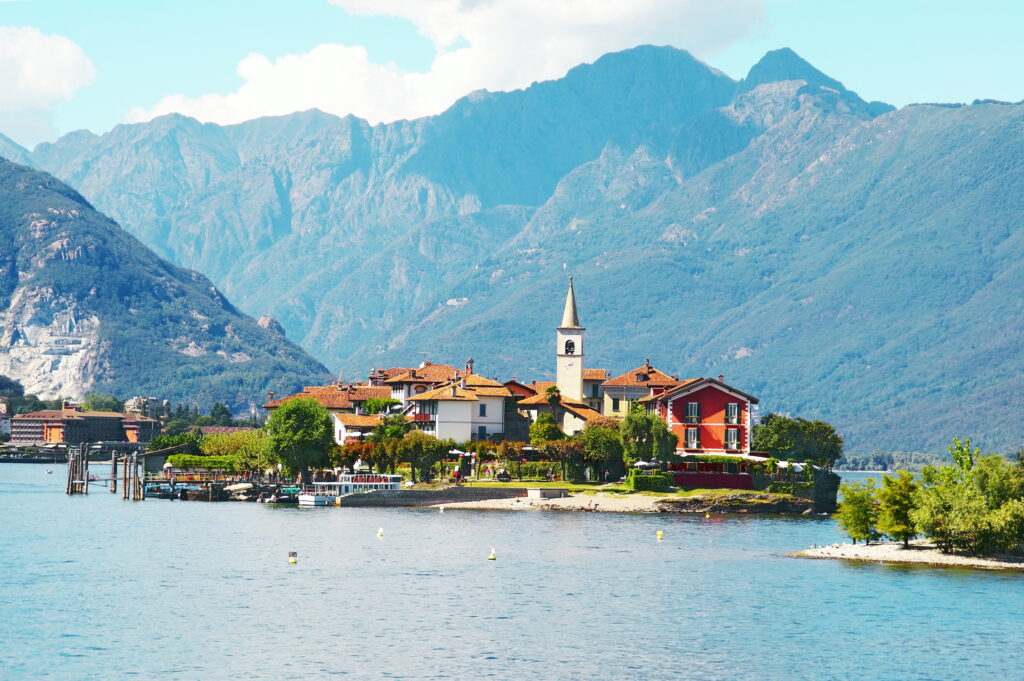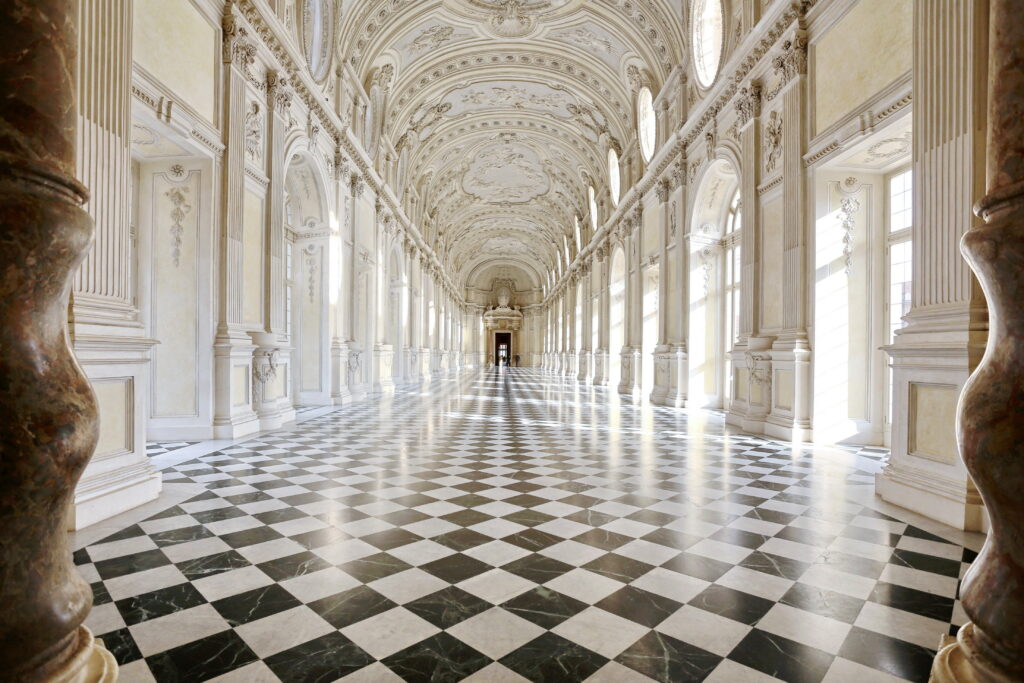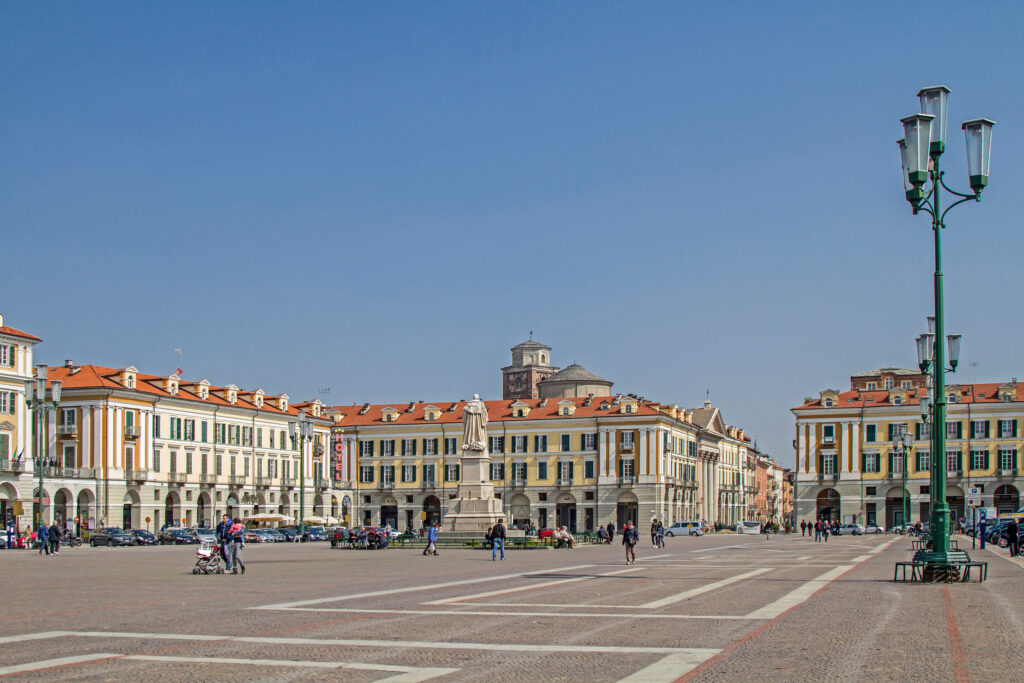
How beautiful the mountains are! If the peaks of the Alps are worth the detour, its valleys have nothing to be ashamed of. Located in north-western Italy, Piedmont is, as its name suggests, at the foot of the mountains. Bordering France and Switzerland, this region of hills, gastronomy and history has much more to offer than its many ski resorts. From Turin, its capital with its exceptional architectural wealth, to the hills dotted with vineyards, via its lakes, castles and waterways, discover the 14 must-sees in Piedmont before heading there at a moment's notice.
1- Visit Turin

As the region's capital, Turin richly deserves its place among the 10 most beautiful cities to visit in Italy. Although it is now the industrial heart of the country, it also boasts a historic center with a rich cultural and architectural heritage. Palaces abound, museums abound and different eras mingle in the streets of this lively Italian city. The must-see Palazzo Reale, a Baroque palace of impressive splendor, rubs shoulders with the Museo Nazionale dell'automobile, much appreciated by mechanical enthusiasts. There's something for everyone in Turin, and you can't fail to delight your taste buds by sampling Piedmontese cuisine in the city's best restaurants.
Click here to find out more about this surprising city, just like the region that surrounds it.
2- Stay on the shores of Lake Maggiore

Italy's second-largest lake after Lake Garda, and shared between Switzerland and Italy, Lake Maggiore
offers part of its lush coastline to Piedmont. Its Mediterranean microclimate has made it a favorite destination for the nobility since the 19th century, leading to the construction of sublime villas and luxury hotels along its shores. The village of Stresa attracts visitors with its architectural jewels and breathtaking views of the Borromean Islands. Surrounded by mountainous landscapes, the lake region is also popular with hikers in search of height and breathtaking views.
3- The Borromean Islands

When visiting Lake Maggiore, a detour to the Borromean Islands is a must. Set sail from Stresa for the archipelago's five islands, three of which can be visited. The beautiful Isola Madre and Isola Bella offer sumptuous palaces, lush gardens and terraces with views. Don't miss a visit to the Palazzo Borromeo, a treasure left by the family of the same name who acquired these two islands in the 15th century. The third, Isola dei Pescatori, belongs to the municipality of Stresa and is still home to a small traditional fishing village.
Looking for a day trip? We recommend this boat trip to admire the islands of Isola Madre, Isola dei Pescatoriand Isola Bella.
4- Discover Lake Orta

More intimate than its big brother Lake Maggiore, lake Ortaaffectionately nicknamed Cusio by the locals, is perfect for travellers wishing to stay away from the crowds. The picturesque village ofOrta San Giulio boasts colorful alleyways, churches and chapels here and there, and a postcard-perfect view of the lake and its island. Walkers and cyclists will also find something to suit them among the many routes and hikes that criss-cross the lake's surroundings.
5- What to do in Piedmont? Visit Asti

An hour's drive from Turin, surrounded by vineyards, lies the medieval town of Asti, renowned for its famous sparkling wine:Asti Spumante. In between strolls through the town's narrow streets, you'll enjoy tasting these great wines, for which some of the surrounding vineyards are listed as Unesco World Heritage Sites. Asti is also famous for the Palio di Asti, a traditional festival where, every third Sunday in September, an impressive bareback horse race is held. To find out more about local grape varieties and wines, head to the village of Barolo and visit its wine museum.
6- Gran Bosco di Salbertand Natural Park

The Gran Bosco di Salbertrand Nature Park is a dream destination for travellers looking for a breath of fresh air in the heart of nature, with its alpine forests stretching out to the east of Piedmont. Located in the Alps close to the border with France, you can hike on well-marked trails through dense, varied vegetation. From 1000m to 2600m above sea level, you'll come across woods, lakes and meadows, as well as numerous plant and animal species, particularly deer.
Although Italy is a major tourist destination, it's still possible to find places far from the crowds.
7- Visit the Venaria Palace

On the outskirts of Turin, La Reggia di Venaria Reale is one of Europe's most spectacular royal residences. Known for its chequered Great Hall, the palace was once home to the royal family of Savoy. Today, it is a UNESCO World Heritage Site and one of Italy's most visited cultural sites. After a visit to the castle, take time to stroll through the gardens and discover the royal stables and adjoining village. To round off the day, the palace terrace offers a gourmet break with a view of the Alps. The perfect opportunity to sample the country's many culinary specialties.
We recommend a guided tour of the palace to learn all the secrets behind its famous architecture.
8- Cuneo and Ostana

To the north of the Parco Naturale Alpi Marittime, the town of Cuneo rises between two high rivers. It's from this geographical position that it takes its name, cuneo meaning "point" in Italian. It's pleasant to stroll through the old town's colorful streets, renowned for their checkerboard architecture. Every Tuesday, locals stroll between the stalls of its market, one of the largest in Piedmont.
All around the town, a number of beautiful little villages are worth a visit. Among them is the typical Occitan village ofOstana. Stroll through its narrow streets of stone houses and enjoy panoramic views of the surrounding Alps.
9- Rivoli

On the outskirts of Turin lies the charming village of Rivoli. Up in the hills, you can lose yourself in the narrow streets of colorful, flower-filled houses. A few vestiges of medieval times lurk here and there in the town center. The Casa del Conte Verde, for example, is a perfect example of 15th-century Piedmontese architecture. For art lovers, a stopover is the Castello di Rivoli, built in the 9th century and now home to the city's Museum of Contemporary Art.
Like Rivoli, Italy is full of charming villages to discover off the beaten track.
10- Val Grande National Park

Hikers in search of spectacular scenery have no hesitation in taking to the roads of one of Europe's largest natural parks. The Val Grande National Park extends its verdant valleys over 15,000 hectares near Lake Como. Nestled in the park, picturesque villages in the middle of the mountains offer an authentic interlude to those who discover them. Trekking enthusiasts will love the Ossola valleys and their well-marked trails.
11- What to do in Piedmont? Going to Alessandria

East of Asti, Alessandria is the capital of a rich industrial region. Best known for its impressive defensive citadel, the town was an important military stronghold as early as the 18th century. Art and history buffs won't want to miss a stop at the Museo Civico, which exhibits a selection of works and objects from the region. At the end of the day, take a stroll along the River Tanaro. Cross it on the modern Ponte Cittadella, designed by architect Richard Meier.
12- Hike historic mountain trails

On the border between France and Switzerland, Piedmont is home to some formidable historic mountain routes. The ancient paths fashioned over the years for trade or communication between peoples have been marked out and rehabilitated. This is a wonderful playground for walkers and cyclists, who can enjoy Piedmont's incredible landscapes. Among them, meadows dotted with ancient remains and picturesque villages.
With walkers in mind, here's our list of the most beautiful routes in Piedmont.
13- Visit Alba

The capital of white truffles, the village ofAlba is a gastronomic landmark in the Piedmont region. The Fiera del tartuffo blanco, or Alba Fair, is a world-famous market that celebrates the local truffle every October. Surrounded by vineyards, Alba is the historic center of the Langhe wine region, a renowned Piedmontese wine. In between wine tastings, visit the must-see sites of what was once known as "the city of a hundred towers". Although most of the towers have been destroyed, visitors can still admire the Gothic San Lorenzo Cathedral and the Palazzo Comunale.
14- What to do in winter in Piedmont? Skiing in the Alps

Winter sports enthusiasts will easily find what they're looking for in Piedmont. Renowned ski resorts such as Sestriere and Bardonecchia offer slopes amidst the snow-covered landscapes of the Italian Alps. Between skiing sessions, explore the surrounding mountain villages. Enjoy a local fondue, accompanied by local wine. In winter, Piedmont is the perfect destination for skiing down the slopes amid breathtaking panoramas.
Looking for winter sports destinations in Italy? Discover our must-sees in the Abruzzo region.
What to do in Piedmont in 4 days?
Piedmont is a region rich in places to visit and discover, and in 4 days you'll have time to visit the main must-sees. Here's our suggested itinerary:
- On the first day, discover the city of Turin, the region's capital. Visit the Palazzo Reale, the city's main palace, before strolling the streets.
- Then spend the day at Lake Maggiore and experience life as a castle, visiting the luxurious palaces and gardens that inhabit its islands and shores.
- On the third day, hike in the Alps. Piedmont offers day hikes and walks that will take you through typical Alpine landscapes and unforgettable viewpoints.
- Finally, head for the medieval town of Asti to taste the local wine and discover its vineyards and verdant landscapes.
How do I get to Piedmont?
- By train, you can reach Turin from France by arriving at the Turin Porta Nuova or Turin Porta Susa stations.
- By car, take the A32 or A6 freeway from France. If you prefer the national roads, the journey will be longer, but the beauty of the scenery is well worth the detour.
- By bus, several companies offer direct routes to Turin and other towns in Piedmont from many destinations in Europe.
- By plane, reach Turin from Turin-Caselle airport (TRN), Piedmont's main airport. Many direct flights are available from major European cities. Milan-Malpensa airport (MXP) offers an alternative, with more international flights. You can then reach Piedmont by train or bus.
What are the most beautiful villages in Piedmont?
Here's our non-exhaustive list of Piedmont's most beautiful villages:
- Orta San Giulio: famous for its narrow streets and colorful houses. Don't miss theIsola San Giulio, a small island accessible by boat, and the Basilica of San Giulio.
- Neive: Nestled in the Langhe hills, Neive is surrounded by vineyards and lush green countryside. Don't miss the Clock Tower and thechurch of San Pietro.
- Vogogna: Located in the Ossola valley, Vogogna is surrounded by mountains and forests. The village is famous for its Castello Visconti, a remarkable example of medieval architecture.
- Ricetto di Candelo: Located near Biella, Ricetto di Candelo is a fortified medieval village. The village is a unique example of medieval architecture, with surrounding walls and watchtowers.


